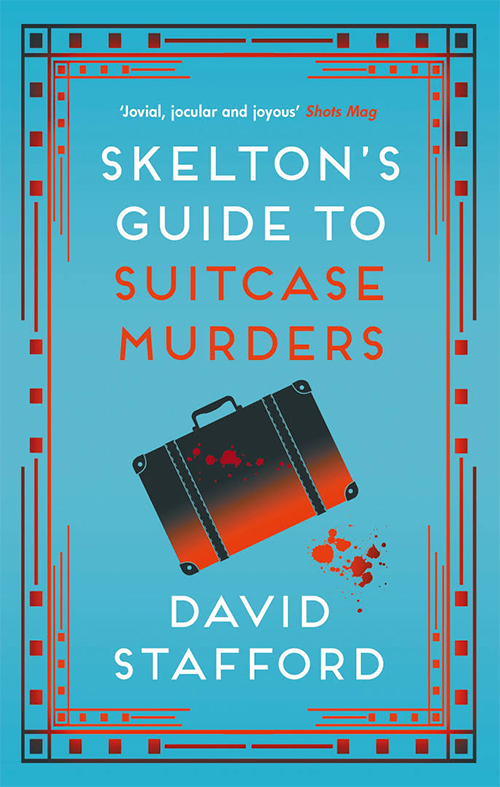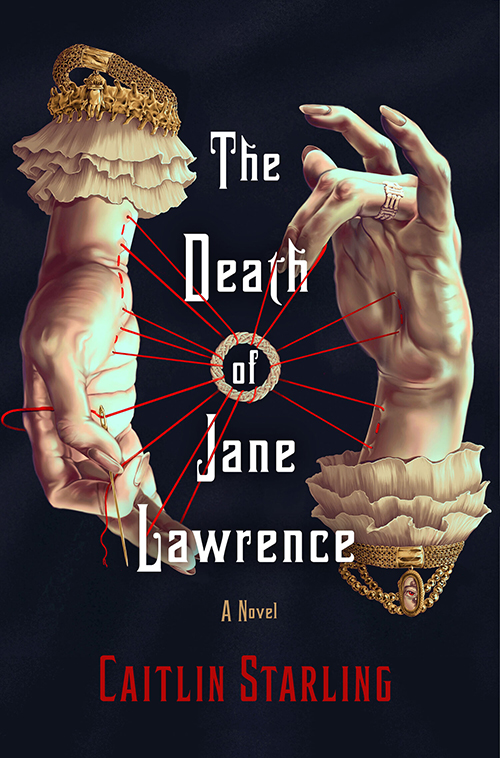Skelton’s Guide to Suitcase Murders by David Stafford is a cozy historical murder mystery set in 1920s England and based loosely on a real case. Although it’s the second title in the series (preceded by Skelton’s Guide to Domestic Poisons), audiences can enjoy it without reading the first. Known for his propensity to win hopeless cases, Suitcase Murders follows barrister Arthur Skelton as he sets out to defend Dr. Ibrahim Aziz, who’s been accused of murdering his wife and packing away her remains inside a discarded suitcase. Armed only with a quirky array of characters and unconventional etymological forensic evidence, he’s got his work cut out for him to prove his client’s innocence and prevent a British-Egyptian diplomatic scandal.

Foreigners, unless they conformed to one of the acceptable stereotypes, rarely played well with juries.
David Stafford, Skelton’s Guide to Suitcase Murders
Despite the grisly details of the murder, Stafford’s whimsical voice and clever prose immediately set a light, easy tone. Skelton and Edgar, his long-suffering clerk, spend much of their time traveling to and from locations in their quaint little town to meet clients and discuss their findings, resulting in many memorable, hilarious exchanges. Their familiarity with one another also leads to several frank conversations about racism and international relations in post-World War I England. Stafford demonstrates a clear awareness of the problems with the rise of the British Empire while still portraying likable characters living within a system defined by it. On several occasions, Skelton must come to terms with strategies that work in favor of his European clients but simply won’t do for Dr. Aziz, regardless of his innocence.
Skelton’s role as a barrister is an interesting choice since most mysteries feature professional or amateur investigators solely focused on solving a single mystery. Skelton, however, juggles many cases over the course of the novel—the titular suitcase murder almost completely forgotten at certain points. It’s difficult not to view this as a flaw since readers are primed to parse through the text for clues about Dr. Aziz’s case only. Furthermore, Skelton’s role as a lawyer also means he seldom takes an active role in the investigation; clues seem to fall into his lap, and he receives conveniently relevant correspondence from friends precisely when he needs it. It is only in retrospect that readers can make sense of the various cases, letters, and acquaintances scattered throughout Suitcase Murders, but the process of getting there is tedious for those unaware of this reward waiting at the end of the novel.
Perhaps the ‘criminal mastermind’ was as much a myth as the ‘fair trial.’ Something we like to believe in because it makes the world a more comfortable place in which to live. The myth that there are good people and bad people. And bad people aren’t like ‘us.’
David Stafford, Skelton’s Guide to Suitcase Murders
While Skelton and Edgar are jovial and sweet with their bumbling ways, the diverse cast of female characters is the true highlight in Suitcase Murders. From Skelton’s wife Mila, who teaches archery and fancies flying a plane to Africa, to Rose, a bright young lady training to be a lawyer, to Phyllis Pitt, a positively ghastly woman who revels in causing trouble, Skelton manages to showcase a robust cast of women who anchor the story to the minutiae of everyday life. I only wish Stafford had included a similarly nuanced portrayal of Dr. Aziz and his Egyptian heritage. Unfortunately, readers never learn more than the fact that he’s Egyptian.
A charming, surprisingly funny murder mystery romp with memorable characters and dialogue, Skelton’s Guide to Suitcase Murders is perfect for unwinding after a long day. It’s a quick, engaging read, and the inviting setting of a quaint English town will draw readers in and leave them excited to visit again for Skelton’s next great adventure.
Thank you to NetGalley and Allison & Busby for sharing an advanced reader copy of this book in exchange for an honest review.

